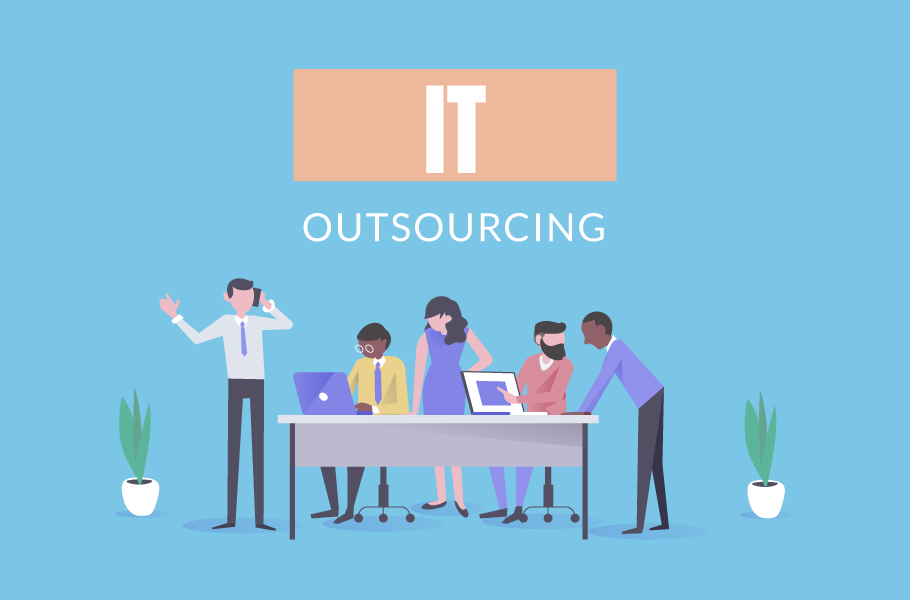IT Management: Streamlining is the key to success
The importance of the IT sector in companies keeps growing, as technology continues to evolve and present constantly new solutions for different market segments. As the IT area becomes more interactive with other sectors of the company and influences the management process more decisively, there is also a need to streamline the IT Management process.

This is the general trend in the business world: streamline to do more and spending less. There is no point in making the processes more complex – it is critical to make them more simple and dynamic to make them more agile and easy to operate. Keep reading and understand why!
Benefits of streamlining IT management
A study by IDC (International Data Corporation), which is a worldwide leader in IT research and consulting, has proven that complexity in IT leads to lower profits, as well as harms the growth and innovation capacity of an organization. Amongst the companies that participated in the study, those that had reduced complexity in IT management were able to achieve benefits like:
- Improved productivity;
- Accelerated time to launch products in the market;
- Optimized client service;
- Capacity to relocate the IT team for more strategic planning.
Total Cost of Ownership (TCO)
Total Cost of Ownership is a calculation system which purpose it guiding the consumers in cost assessment, as well as the benefits related to the purchase of components used in IT management. These costs involve, usually, planning, acquisition, operation, maintenance and disposal. The result of the total calculation of TCO must be compared to the TBO (Total Benefit of Ownership) to identify the feasibility or not of the investment.
An example of TCO calculation that may change dramatically the positioning about investments is related to free software. Although there are no costs with licenses, many other expenses may turn a free software project a lot more expensive. In addition, its costs do not involve any guarantee; there are no responsibilities of the developer regarding the consequences of using the software. As the development of free software depends on different models and languages, it reduces the performance and efficiency in its use, increasing implementation, customization and training costs: a maintenance and support structure complementary to the activities of the community must be developed.
In most cases there is a big learning curve that may cause delays in the implementation of the solution, as well as internal boycott if the solution is not very “user friendly”. Costs with customization and training must also be considered and the knowledge cannot remain in the head of a few professionals, because if they leave your company, it will be unassisted in the maintenance of the free platform. Therefore, it may be more expensive than proprietary software if you do a TCO calculation.
Automate processes, manage priorities and streamline data and applications
Process automation is what keeps your company competitive in the long run. Regarding the market where we operate, for example, automation in IT management is the key to ensure maximum availability and, therefore, greater efficiency. Receive automatic warnings directed to the right professional about the unavailability of systems to solve problems faster and reduce costs to find problems or find the professional in charge. In order to hold the production environment stable, the IT area must define priorities to direct the resources (equipment, personnel, and software) more objectively, getting prepared to be involved in new projects.
It is also necessary to find ways to consolidate and release applications, making the documentation of all integrations and replacing them with simpler alternatives in order to get a streamlined view of the data. A complete mapping of the environment and of all premises of the IT environment is key to find the root cause of problems.
Structuring the IT area properly and establishing effective governance
Another way to streamline the processes in IT management is measuring properly the physical structure and resources of the organization that contribute to business development. Often the sectors, and IT is not an exception, grow too much and serve purposes of their own area and not the objectives described in the strategic planning of the organization. In addition, it is recommended to look for external and internal resources on demand and define an outsourcing model suitable for the strategy and requirements of the company. Sometimes outsourcing certain processes can be a solution so that IT remains focused on deliveries strictly related to guaranteeing resources for maximum efficiency of the organization, leaving secondary tasks to be carried out more effectively by experts.
Approaches to reduce complexity
Organizations are looking for approaches to reduce complexity, many of which were described by people interviewed in the IDC research. Some of the main approaches are:
- Consolidation and rationalizing applications, systems and data centers. Reducing the number of servers, networks and physical storage reduces the number of systems the IT team must manage, as well as corresponding charges. Using converging and integrated systems may reduce complexity even further, providing a single integrated solution that combines server, network and storage in a single appliance. The same is true for applications, where functionality redundancy may provide opportunities to consolidate applications or even an infrastructure upgrading project.
- Application upgrade. Replacing legacy applications and integration layers and customizations that are often around can streamline much of the infrastructure and reduce the load of IT management. Upgrading also offers the opportunity to start to use cloud-based applications, which, on their part, offer the opportunity to reduce or eliminate datacenter operations.
- Unifying operating environments. Managing multiple operating systems and environments increases the work load of teams and the complexity of IT, so streamlining in a single environment significantly reduces the complexity.
- Outsourcing and cloud computing.. Outsourcing complexity to third parties, including providers of managed services and cloud providers may eliminate the complexity problem or at least decrease it
- Adopting best automation and integration tools and technologies. Even the slight changes generate key impacts for the underlying infrastructure. Organizations can often get great benefits by implementing automation and integration tools.
IT Management Tool
As manufacturers of platform for IT management and infrastructure monitoring, we recommend OpMon. Click to access the product web page.
These are the tips to streamline the IT management and, therefore, obtain better results. We also recommend reading our article on: Five tips to prevent mistakes in IT management.










